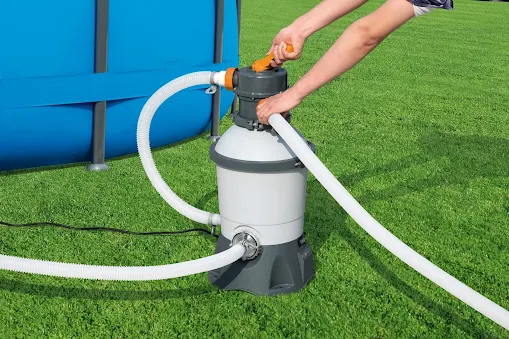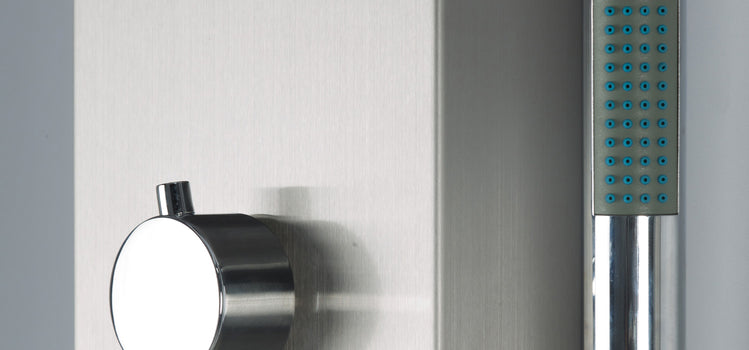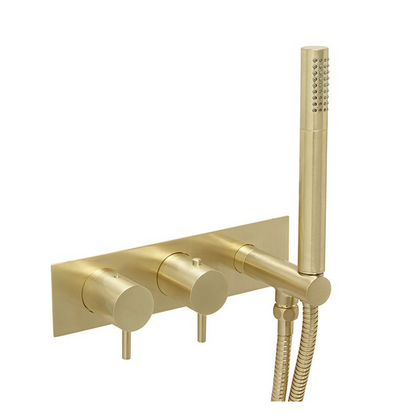The filter in your pool isn't working properly, and you're looking for solutions. The good news is that you're in the right spot! The problem with the pool filter can come in various forms, and not all problems with filters are due to problems with the filter. A blocked or closed skimmer and pumps, as well as valves, are all liable to cause problems with your pool filter. Before you dive into figuring out how to fix your pool's filter, make sure you look for anything that might be hindering the flow of water into or out of the filter. Here's a list of the most common problems with the filter, as well as the many solutions you can use to be used to fix them.
( Image Credit: Sunnspa)
The pool filter has no pressure
low-pressure icon - When the pump is shut off, or the valve is set to drain or recirculate out to the waste stream, pressure in the filter must be zero. If the gauge of the filter's pressure is reading the value of zero or is close to zero, with the pump operating and the valve operating in backwash or filter mode, there is something wrong. Try giving the gauge face a move with your finger to check if it appears. Check the gauge dial and face for warping. This may stop the gauge dial isn't moving.
If you're certain that the water is flowing in the filter at a regular rate it is possible that the gauge has failed there could be a blockage within the air bleeder assembly the gauge is screwed into. For a check, shut off the pump and then take out the pressure gauge using either pliers or a small screwdriver. Use a small or stick a screwdriver through the hole to remove any obstructions or dust. It could block either the gauge for pressure or the air relief assembly. These gauges aren't expensive instruments that are likely to fail in time. It is never a bad idea to have an extra gauge available.
If the water isn't flowing in the pool filter at a regular speed, there's most likely to be a blockage or clog prior to the pool's filter. This could be caused by a clogged impeller, pump basket pipe, or the skimmer basket. It may also be a closed or damaged valve prior to the pump. In certain situations, the pump could have an air leak and draws into the air more than it is able to draw. This could reduce the pressure of the filter (and capacity to filter).
Pool Filter has Too Much Pressure
High-pressure gauge If your filter pressure is greater than normal, this typically means that your pool is dirty. It is recommended that you backwash the filter (or cleanse your filters) whenever the pressure increases 8-10 PSI over the clean start-up pressure. The recommendation of the manufacturer may differ slightly, based on the type of filter you are using.
If the pressure is more than this, it might be a foreign matter within your filter (paper materials, polymers mulch and oils) that are actually blocking it. It could also be a closed return valve or bypass valve that is installed after the filter. In either case, the pressure increases to extreme levels. The filter or filter valve (multiport or slide) may be damaged internal components that have encased themselves within the pipe or fitting. Examine the return valves and heater bypasses to ensure they're functioning. Return pipes or valves following the filter aren't typically clogged with dirt. However, broken valve or filter components could impede water flow following the filter, which could raise the pressure in the filter.
For more information on ensuring optimal water pressure and flow, especially when it comes to shower valves, consider checking out Shopping for the Best Shower Valves in the UK? Know These 7 Points Before You Buy!. This comprehensive guide offers valuable insights into selecting the right shower valves for your needs, including factors to consider, such as pressure ratings, compatibility with different plumbing systems, and durability. By understanding these crucial points, you can make informed decisions to ensure efficient water management in your home.
High pressure on the filter could be hazardous! Clamshell lids for filter filters have been reported to pop off in the event that the clamp band breaks at high pressure. Most pool filters operate in the range between 8-15 PSI but they could vary from 3-30 PSI. If your filter's pressure is suddenly rising to a higher level than your normal reading or if the pressure for starting or cleaning is higher than the manufacturer's recommendations it could be due to internal problems with your filter or valve issues. Check that all valves and pipes are functioning after you've changed the filter. If you notice a rise in pressure up to 40 PSI or more, turn your pump off immediately.
Pool Filter Pressure Rises Too Slowly
Pool filter Typically, pool filters be in operation for several weeks prior to the pressure being raised to 5-8 PSI more on the gauge. The most massive filters can require months of operation when combined with small pools. However, some filters encounter issues where the pool's water is able to bypass the filter and is returned to the pool unfiltered. This could cause the high pressure in the filter to build up gradually, and it could take several weeks to get rid of the water in a negative way. In D.E. and sand filtering, issues with the valve for filtering can cause water to flow through the filter. Problems with internal components (broken or missing or misaligned parts of the filter) inside a tank can result in water bypass on any type of pool filter. Additionally, an oversized pool pump could push dirt straight through the filter.
Pool Filter Pressure Rises Too Rapidly
If the pressure on your filter rises quickly within a few days or even hours following backwashing, the filter medium (sand cartridges, sand, or D.E. grids) could require attention. If your media is infested with minerals or oils it will require extensive cleaning using a filter cleaner designed specifically for your particular filter. In some instances, it may be necessary to replace it with a new filter media.
D.E. filters also experience an increase in pressure quickly when a low amount of D.E. powder is being used. This is also the case in the event that you do not open the filter and completely wash the D.E. grids at least once a year.
When the water is in poor condition needing to do backwashing regularly or more often is considered to be normal. If you have clean and clear water, a properly designed and functioning filter for your pool should have the capacity of running a filter for 3 to 6 days between backwashes.
The pool filter is leaking water Around the Clamp
leaks in the pool filter the clamshell-type filtering systems that are pressurized can be risky if the pressure is excessively high. This is a typical filter tank design used for cartridges and D.E. pool filters. There are two halves as well as the centre clamp is used to hold the two pieces. When the band of clamp leaks water, it's not sealing properly and puts you at a higher risk of accidents that are pressurized.
Shut off the pump, and remove the tank from the filter via the bleeding valve. Take off the clamping band for the filter and the filter o-ring a.k.a. the belly band and the o-ring. Clean the o-ring by using water and a rag to get rid of all dirt and other debris. Also, wash the rim of the tank in which the o-ring rests. Examine the o-ring for any damage. If the ring is no longer circular, but triangular in cross-section or if it's damaged or cracked, or has dry rot Replace it.
Lubricate the o-ring of the filter with Teflon pool lube and install the top part of the tank. Attach the clamp band to both tanks and tighten the nut until it is tight up to the point where the springs are in contact (new type clamps) and the two clamp ends are within 1/4 of an inch (older clamps). Tapping the band gently with a mallet or wrench on the tank as you tighten it will improve the seal.
In rare cases, tanks could warp, which can cause a good seal between the band clamp. If this happens, you should contact your dealer or filter manufacturer to inquire about warranty coverage or replacement parts numbers.
The pool filter is blowing dirt back into the pool
After backwashing, it is normal for a tiny amount of dust to enter the pool. Utilizing the multiport valve Set the rinse time to 20 secs should solve the issue. For Sand filters, a tiny amount of dirt that is fine and silty can traverse the filter on a regular basis and be regarded as normal. Utilizing a filter cleaner or changing the filter sand may aid, as can using clarifiers. Be sure to ensure that there isn't sand entering the pool. It's a good idea to brush it and see if it poops upwards into the water, it's dust. If it is just a whirlwind in the water, it could be dust that has escaped through a damaged filter lateral.
D.E. filters can lose D.E. powder to the pool (which appears to be like sandy dust) by tiny tears in fabric fractured or lost grid of the filter, cracks within the manifold, or due to the absence of air bleeder filter or the standpipe O-ring. Cartridge filters should also be correctly installed in the tank in order to prevent water from entering the cartridge and flowing around the. There could also have holes or holes cut in the fabric of the cartridge. The water bypass may also result from an overly large pool pump, the improper usage of chemicals for cleaning or even from a vigorous cleaning process using pressure washers.
Another problem that can be caused by the valve for pool filters in Sand or D.E. filters. If the valve for your filter needs repairs or replacements, the valve may be allowing a portion of the water back into the pool that is not being filtered.
The Pool Filter is Leaking out from the Backwash Line
filter valve for pool This is a valve issue, not a filter issue. When a multiport valve is used, the rotor and the gasket of the spider create a seal to stop water from flowing into the backwash port if the setting is other than Backwash. If you notice a drip or stream that is constantly flowing out of backwash lines, you should open the multiport valve to examine the gasket. It could be bent, deformed, cracked or damaged. If the handle of the valve is loose and lacks tension, you may require replacing the spring underneath the handle.
The Pool Filter isn't Cleaning the Pool Water
Why is the pool unclear? There could be a myriad of reasons however let's begin with the water's balance as well as sanitation level. We have been preaching here on the blog over years to maintain clear and clean pool water, you must have the right proportion of sanitation, filtration circulation, and balanced water.
If your water quality, circulation as well as water balance are on It's time to examine the filtering system in your pool. Are the pumps running at a sufficient rate each day to allow your filter to maintain? Do the filter and pump are appropriate for the size of your pool as well as for the one? Do you think that the water is escaping the filter and going back to the pool without being filtered?
If your filter for your pool isn't quite right or the filter's media is wearing out Try using clarifiers to help in the coagulation of suspended particles. It is also possible to employ a flocculant in order to reduce suspended particles on the floor and then vacuum them up to dispose of. In many instances, it takes several weeks to get rid of bad water conditions, you can replace your filtering media (sand cartridges, cartridges, D.E. grids or D.E. powder) can greatly assist.
The Pool Filter is making loud noises
pool filter pump, this is an interesting question. If you notice noise coming from the pad then the pool pump is at fault. When it is in operation the pool filter can be silent. Loud pumps in pools are typically the result of cavitation (starved of water) or due to faulty inner motor bearings. A pool pump that has an air leak could release plenty of air into the filter. It is sometimes very loud when it is carried through the filter. If you're experiencing a constant flow of air bubbles within the water, or there are bubbles visible through the transparent lid of your pump Look for and patch all suction leaks (before you pump) by sealing the area with sealant.




No comments:
Post a Comment